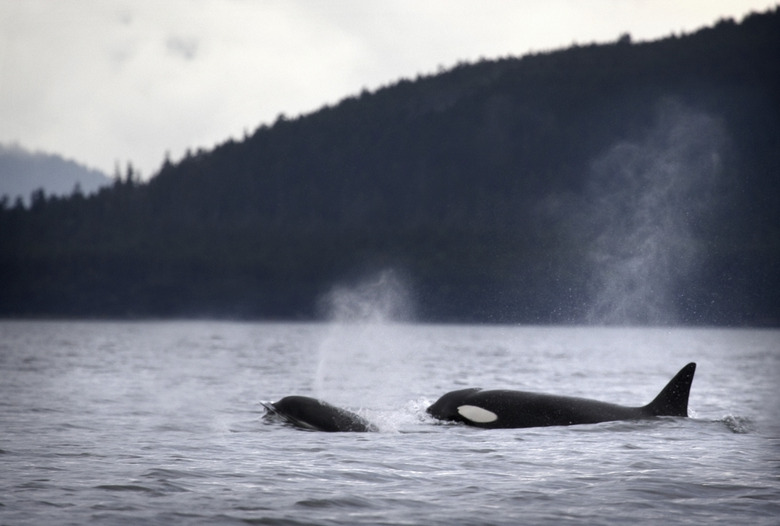The Three Types Of Environmental Adaptations
An adaptation in nature is acquired through evolution and conveys some type of advantage that help a species to pass its genetic material along to another generation. It typically takes one of three forms: structural, physiological or behavioral.
Structural Adaptations
Structural Adaptations
A structural adaptation is a change involving a physical aspect of an organism. The physical change is often related to a change in the organism's physical environment. For example, an ecosystem suddenly becoming forested might cause the animals living there to develop suction pads or climbing claws, which would convey a distinct advantage over species that did not change. Other examples of structural changes include developing wings for flight, fins for swimming or powerful legs for jumping.
Behavioral Adaptations
Behavioral Adaptations
A behavioral adaptation is a change affecting the way an organism naturally acts. This type of adaption could be caused by a change in the surrounding environment or the actions of another species. For example, predatory animals might start hunting in packs — giving them an evolutionary advantage over solo hunters. In addition to changes in a predatory strategy, examples of behavioral adaptations include changes in social patterns, communication methods, feeding habits and reproductive strategy.
Physiological Adaptation
Physiological Adaptation
Physiological adaptations are similar to structural adaptations in the sense that they involve a physical change to the species. However, physiological adaptations aren't always seen in an organism's appearance. This type of adaptation may be driven by either a change to the environment or the behavior of another species. For example, a species living in water that suddenly becomes more acidic might adapt by slowly shifting its own body chemistry. Other examples of physiological adaptations include developing greater intelligence and improving the senses.
Every Characteristic is Not an Adaptation
Every Characteristic is Not an Adaptation
Fully embracing the Theory of Evolution and idea of adaption might cause you to start seeing every characteristic of an organism as an adaptation. However, many attributes of organisms did not develop as a way to better pass on genetic material. Some characteristics may simply be a happenstance of history. Other characteristics might be a by-product of a true adaptation. For instance, blood's red color results from the chemical process involved in blood — the color is not, in and of itself, an adaptation. Some characteristics, such as the human appendix, may be outdated adaptations, still hanging on past the point of their usefulness.
Cite This Article
MLA
Smith, Brett. "The Three Types Of Environmental Adaptations" sciencing.com, https://www.sciencing.com/three-types-environmental-adaptations-8572825/. 24 April 2017.
APA
Smith, Brett. (2017, April 24). The Three Types Of Environmental Adaptations. sciencing.com. Retrieved from https://www.sciencing.com/three-types-environmental-adaptations-8572825/
Chicago
Smith, Brett. The Three Types Of Environmental Adaptations last modified August 30, 2022. https://www.sciencing.com/three-types-environmental-adaptations-8572825/
